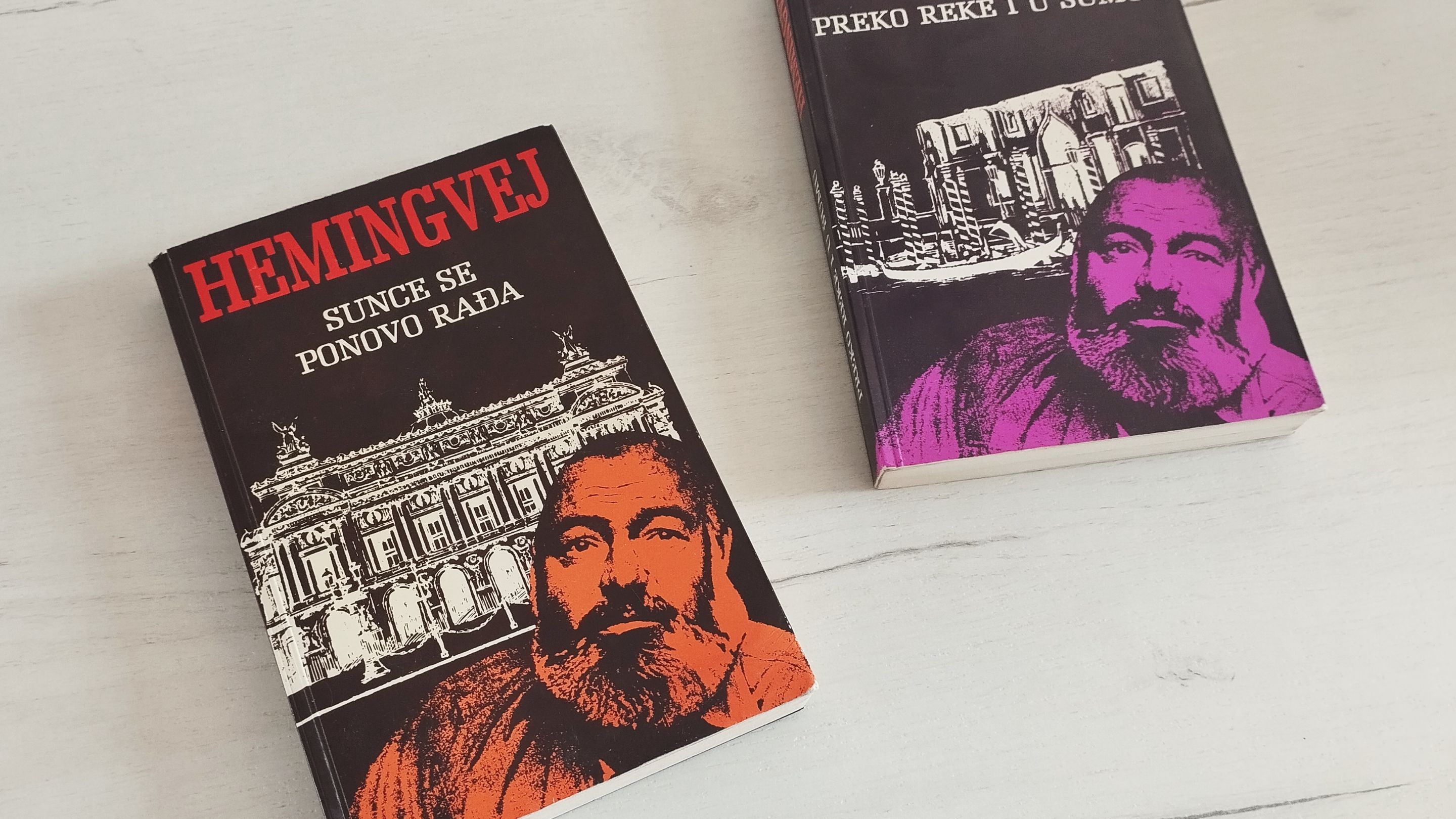There are writers you adore, and then there are those you wrestle with. Somehow Hemingway is, for me, both.
It took me a while to get used to Hemingway’s style — dry, restrained, painfully precise. At first, it can feel too cold, too stripped-down, like reading a news dispatch. But then, out of nowhere, he hits you with a sentence so raw and honest it’s like someone cracked open a window in a suffocating room.
I recently read two of his works: The Sun Also Rises and A Moveable Feast. Similar in form — although one a novel and the other a memoir — both capture his life as a young writer drifting through Paris and Europe post world war I. Together, they paint a portrait of longing, joy, and quiet disillusionment in his search for meaning, love, and a sense of peace.

The Sun Also Rises
"Oh, Jake," Brett said, "We could have had such a damned good time together." "Yes," I said. "Isn't it pretty to think so."
Picture this: four uncertain men and one femme fatale, all recovering from a war that left their generation spiritually bankrupt, wandering across France and Spain in pursuit of hedonism, booze, and fleeting romance. They go from bar to bar, city to city, chasing some sense of meaning — or perhaps simply running from its absence.
At the heart of this semi-autobiographical novel are Jake and Lady Brett, trapped in a love that can never fully be realized. Jake’s war injury has left him impotent; Brett is torn between her love for him and her unrelenting thirst for freedom, chaos, and connection. Jake is too proud to ask for all of her. Brett is too wild to be tamed.
This is the so-called Lost Generation — people stumbling through the aftermath of World War I, searching for anything to dull the pain or give the illusion of purpose. They live as if nothing matters but the next thrill or moment of peace.
“I can’t stand it to think my life is going so fast and I’m not really living it.”
Their journey peaks in Pamplona during a wild, days-long fiesta and the brutality of the bullfights. The group spirals into emotional and relational chaos—boiling over with tension, resentment, and heartbreak.
Most of the novel unfolds through conversations between characters, full of bitterness, sarcasm, longing, and unspoken wounds. It took me a while to adjust to Hemingway’s tone here: sparse, matter-of-fact, stripped of metaphor. It often reads like a journal — detailed, dry, but sharp when it counts.
There are no flowery descriptions or grand monologues. Just a group of weary people trying to outrun their ghosts.
Rating: 4/5
A Moveable Feast
This book is Hemingway’s memoir of his early years as a struggling, unknown writer living in 1920s Paris. It’s a nostalgic collection of sketches, filled with encounters with literary legends like James Joyce and F. Scott Fitzgerald, and glimpses into their quirks, habits, and conversations about life, art, and writing.
In typical Hemingway fashion, the most personal aspects — his feelings, his marriage — are portrayed with extreme restraint. As it is often the case, he leaves the iceberg beneath the surface, the unspoken feelings lie subtly between the lines.
“We would be together and have our books and at night be warm in bed together with the windows open and the stars bright.”
Reading this book feels like flipping through an old photo album. For us, it’s a vivid peek into one of the most iconic literary circles in modern history. For Hemingway, it’s a quiet elegy — an ode to a time long gone and choices which consequences hurt us for lifetime.
“But this is how Paris was in the early days when we were very poor and very happy.”
Rating: 3.75/5
Together, these books show two Hemingways: the young artist soaking in the light and culture of Paris, still unclaimed and happy in his poverty, and a young man trying to live fully in the shadow of wounds the world couldn’t see. A Moveable Feast is reflective and tender (it is written in his 60s), a backward glance full of melancholy. The Sun Also Rises is raw and restless — a portrait of people chasing life at full speed while trying to forget what’s chasing them.
My favorite Hemingway still remains For Whom the Bell Tolls but if you want to delve into more of a autobiographical side of him, either of these two books will give you a more personal look at who he really was.